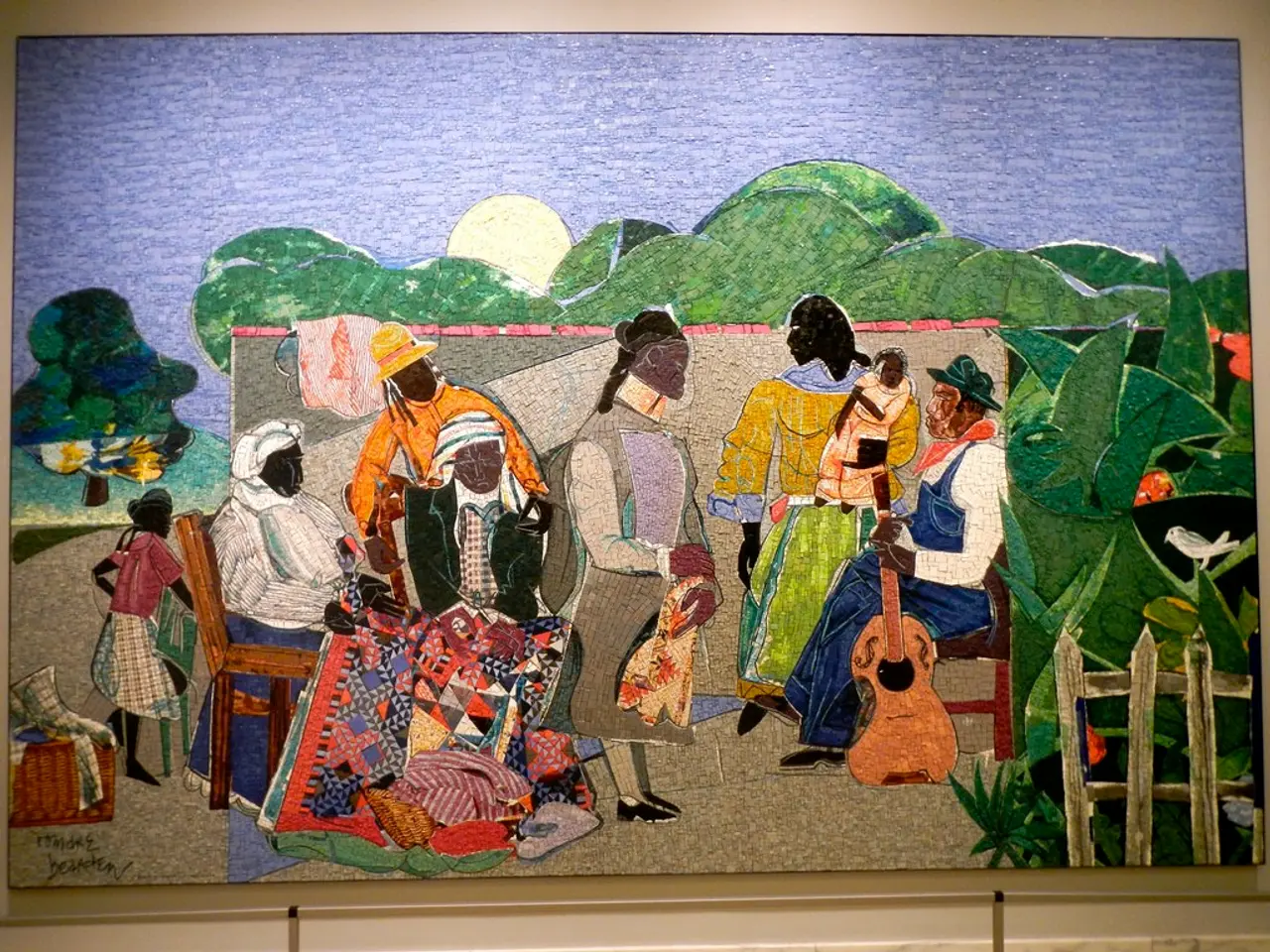Uncovering a rhythmic and melodic balance in the flow of seconds
=====================================================================
In the realm of art and science, three conceptual artists - Katie Paterson, Jonathon Keats, and Alex Braidwood - are pushing boundaries and challenging perceptions of time and distance. Their works, which often bridge vast temporal scales with contemporary experience, offer a fresh perspective on the multidimensional nature of time and space.
Katie Paterson, a Scottish artist, engages with deep time and geology, connecting human perception with vast temporal and spatial scales. Her installation, Afterlife at Folkestone Triennial 2025, uses materials from extinct or endangered landscapes to evoke a sense of geological time, embodying both ecological fragility and deep history.
Jonathon Keats, a San Francisco-based conceptual artist and experimental philosopher, is widely recognized for artworks that combine science, conceptual art, and experimentation with cosmological and philosophical time. His projects often fold in projected futures or alternative temporalities, reframing how humans perceive time relative to the universe.
Alex Braidwood, an acoustic ecologist and sound artist, operates at the intersection of time, science, and conceptual art. Braidwood’s artworks use multidimensional scientific concepts, such as biology and cosmology, to reflect on human experience across time, often in immersive or performative ways.
Together, these artists create artworks that challenge linear time, layering human-scale experience with geological, ecological, and cosmological timescales. This bridges distance and time not only geographically but temporally, inviting viewers to reflect on histories, futures, and the interconnectedness of natural and human systems.
For example, Katie Paterson built an anodized map of 27,000 dead stars and planted a forest that will become a future library of books to be published in 100 years' time. Jonathon Keats' monumental-scaled clocks are engineered to run on "river time" or "arboreal time," and he advocates for a more pluralistic view of time and chrono-diversity. Alex Braidwood specializes in multi-dimensional recordings of the dawn chorus, and most of his recordings were made just a few miles from his home in Iowa.
These artists' shared practice is characterized by using materials or motifs referencing vast or nonlinear timeframes, creating experiential installations that connect past, present, and future, emphasizing ecological and geological time alongside human narratives, and exploring multidimensional time perspectives, where time is not a single flow but layered and interconnected.
Their artworks act as portals across time and space, fostering contemplation of human existence within larger temporal and spatial orders. This series has led to a questioning of assumptions about time and has expanded the conceptual framework of time.
Moreover, multiple time signatures exist at various scales, including the cosmic and microbial. The syncopated rhythms of river time and the symphonic harmonies of the global dawn chorus are part of the Earth's time signatures. These syncopated rhythms of river time echo across the Earth, offering a profound moment of wonder.
In conclusion, the works of Katie Paterson, Jonathon Keats, and Alex Braidwood invite us to reconsider our understanding of time and distance. By bridging vast temporal scales with contemporary experience, they challenge linear time and offer a fresh perspective on the multidimensional nature of time and space.
[1] For more information, please visit Katie Paterson's website, Jonathon Keats' website, and Alex Braidwood's website.
- The series of artworks by Katie Paterson, Jonathon Keats, and Alex Braidwood, located at the intersection of art, science, and technology, explores the realm of artificial intelligence by grappling with complex concepts such as deep time, geology, and ecology.
- Incorporating elements of science and space-and-astronomy, these artists employ innovative technologies in their installations, creating immersive experiences that challenge conventional notions of time and space, extending into the realm of artificial intelligence and beyond.




